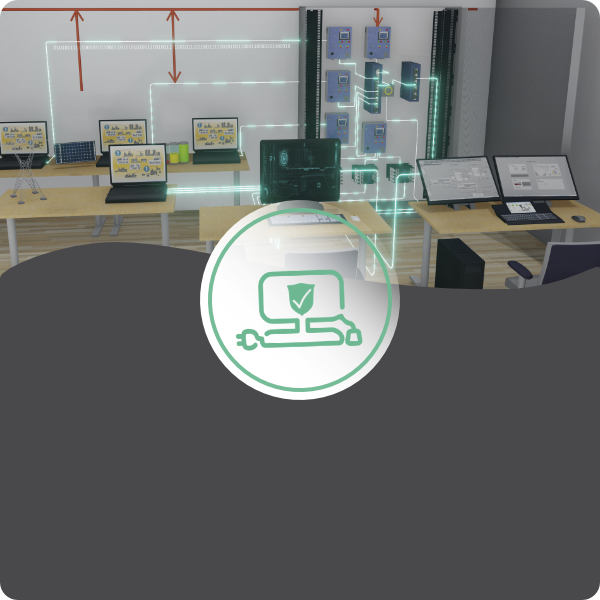Cybersicherheit
sprungmarken_marker_602
The success of the energy transition requires an unprecedented flexibility of system components and endpoints throughout the energy grid down to the distribution grid level. The coordination of this highly distributed system will likely be impractical without (cost-)efficient information and communication technology. This introduces often-cited security issues into the critical infrastructure. At the same time, more connectivity and more complex software and hardware provides a significant increase in attack surface and exposure. However, in practice and in academia, many effective defense mechanisms, attack detections and protection approaches already exist, but their correct and careful implementation is often considered as too costly. The cybersecurity research groups at the Energy Lab 2.0 are therefore developing and searching for particularly simple and efficient ways to implement more security for the energy systems of the future.
The Security Lab Energy, located in the SEnSSiCC building, serves as an experimental platform for cyber-attacks and defense strategies. The lab is used to recreate threats without the risk of real physical damage in a controller-in-the-loop scenario. To do this, the physical components (wind turbine, solar array, battery storage, variable voltage regulating transformer, and protection equipment) are simulated using real-time models. Only the control systems required for security studies are operated in the real world. After the damage potential is sufficiently understood, the goal is to emulate and successfully defend against cyberattacks within the other Energy Lab 2.0 facilities, too. In this way, defense measures are being researched in increasingly realistic environments and can serve as a role model for energy system operators.
KASTEL Security Lab Energy
The interconnected nature of Smart Grids (SGs) makes them vulnerable and significantly increases the risk of exposure to cyber-attacks. These vulnerabilities, threats, risks and attacks can have severe consequences on the stability of the electric grid. Hence, understanding risks sources, amplifying risk awareness, designing, and developing effective countermeasures for the cyber-physical security of energy systems is essential for the future of energy transition.
The KASTEL Security Lab Energy deals with the development of processes that can guarantee the security and resilience of networked modern SGs. To conduct research regarding the resilience and security requirements of the future energy systems, the KASTEL Security Lab Energy consists of three subsystems:
- Subsystem 1 - utilizes hardware components exclusively from same manufacturer
- Subsystem 2 - hardware from various manufacturers
- a Software Defined Network (SDN) subsystem running on servers
With the implementation of interdisciplinary solutions, it aims at enhancing the security of energy systems. For instance, these interdisciplinary solutions cover attack detection, and mitigation while meeting the requirements of critical infrastructure communication. Moreover, topics such as analysis of the vulnerabilities of energy components, the protection of network protocols and communication, intrusion detection and prevention systems as well as risk analysis and quantification concepts are investigated and developed approaches are tested. Corresponding research topics on solution approaches related to the security of the energy network are examined together with Energy Lab 2.0 at KIT.
For more information, see https://www.kastel.kit.edu/energie.php





 315
315
